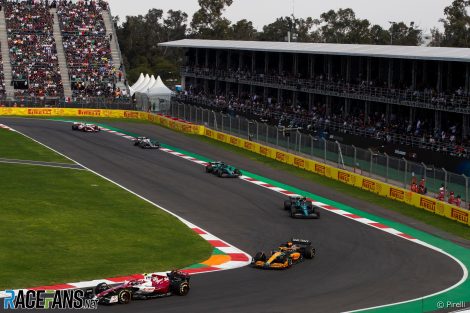The overhaul of Formula 1’s technical regulations for 2022 was supposed to make it easier for drivers to race close together by changing the aerodynamic profiles of the cars.
By reducing the amount of ‘dirty air’ created by the displacement of a moving vehicle, it would become easier for cars to stay in the wake of others and attempt overtakes. At several venues this season that has proved to be the case.
But the high-altitude Mexico City track was an exception to the rule. Last weekend’s Mexican Grand Prix was another processional affair with the top six positions at the end of lap one being the same as at the finish.
Some drivers predicted this would be the case based on what they discovered in practice. There is less dirty air when the air is thinner at a higher altitude, but that means the slipstream effect is considerably weaker than at sea level. It also means there is less cool air which is critical for cars to travel through to control the temperatures of internal components.
Alfa Romeo’s Valtteri Bottas said when he was pressuring Alpine’s Fernando Alonso for position he “had to start saving the brakes” once he was “really close to him.” Bottas only spent eight laps within a second of Alonso before having to back off to cool his car down. He spent the next 27 laps looking at the Alpine’s rear wing.
Bottas’s team mate Zhou Guanyu had his first experience of the track and has surprised how little grip there was. “The track is so slippery. The surface, you are sliding a lot. For me to try to have that confidence in qualifying and also the race was tricky.”
During Zhou’s second stint he ended up stuck in a train of cars where, like Bottas, he could only spend so long running close behind those ahead before lowering his pace to manage temperatures.
Advert | Become a RaceFans supporter and
The slippery surface and lack of grip also his unhelpful implications for race strategies. “This circuit is quite a low tyre degradation circuit, very smooth surface, very low load, not a lot of high-speed content,” explained Aston Martin’s performance director Tom McCullough. “So historically has been very low degradation.

“Graining is always a little bit of a topic with this year’s tyres, especially with the very low grip. We saw front graining on Friday for most people, but typically it clears up during the…
Click Here to Read the Full Original Article at RaceFans…

